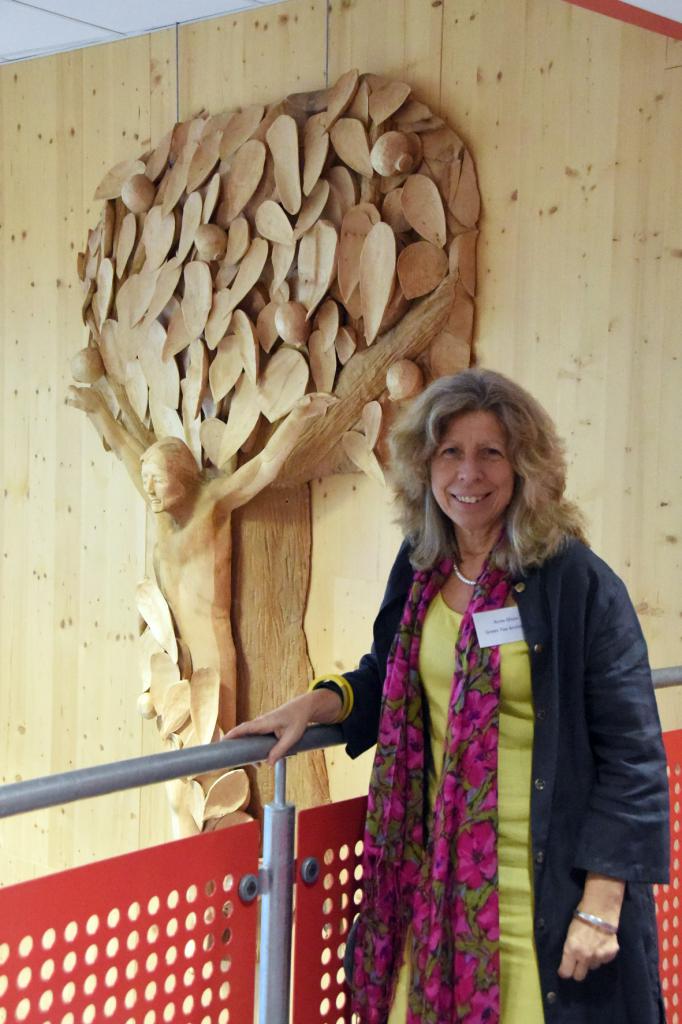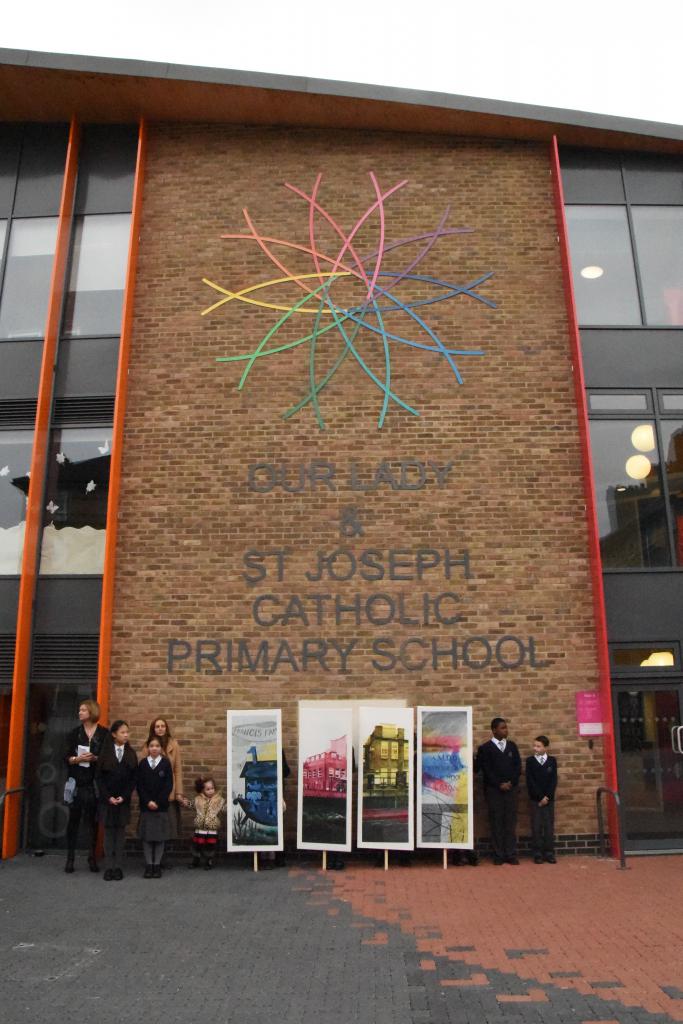On 19 March, pupils, staff and guests from the Diocese and local area gathered to celebrate the opening of Our Lady and St Joseph Catholic Primary School and the St Francis Family Centre in Poplar. Cardinal Vincent celebrated Mass in the school hall to mark the occasion which was followed by a reception and tours of the school given by pupils.
The Cardinal blessed a triptych depicting Noah’s Ark painted by former Catholic Children’s Society (CCS) intern, Gabby Jeans, which hangs in the entrance to the family centre and a memorial stone dedicated to Bishop Philip Harvey, former head of the CCS who died in 2003. Before celebrating Mass, the Cardinal also blessed the foundation stone which quotes Revelation 22:2 ‘And the leaves of the trees are for healing of the nations’.
Built in the shadow of Canary Wharf, the new school was formed following the merger of Our Lady Catholic Primary School and Holy Family Catholic Primary School and, with the support of the St Francis Family Centre, aims to offer a ‘whole family’ education and support programme designed to enable all children to reach their full potential. The school is part of the Magic Breakfasts scheme which is partnered with Caritas Westminster. Run by the CCS to support low-income families in the local area, the St Francis Family Centre offers many services including a nursery, after-school group, assistance for parents on issues such as welfare benefits, health issues, housing and classes in computing, first aid, self-defence, and healthy eating.
An interview with the architect, Anne Dixon
Leading up to the opening of the site, the architect who designed the school and family centre, Anne Dixon from Green Tea Architects, explained what inspired this unique and innovative design. Having previously worked for the Catholic Education Service, Anne was keen to use her expertise to support Catholic education in a different way.

The new project involved bringing together two Catholic school communities and the St Francis Family Centre which supports people of all faiths and none. The first task was to find a strong identity for the site that could be expressed in a logo. Taking the local history of the docks and longstanding Catholic presence in Poplar as inspiration, the logo consists of 10 overlapping ichthuon which represent the interdependency of the different parts of the community.
The family centre was not initially included in the project but Anne remarked that the CCS contribution had created a ‘trinity of community’ which made the project ‘bigger, brighter, stronger, deeper and more real’.
At this point, Anne was reminded of an episode from The Last Battle, the last in the series by C.S. Lewis. As the kings and queens are led to the Real Narnia by Aslan, Lucy remarks that ‘It is far bigger inside than it was outside’… ‘Of course, Daughter of Eve’, said the Faun, ‘the further up and further in you go, the bigger everything gets.’
This inspired Anne’s vision for the new building. It was familiar in the sense that the St Francis Family Centre and the two schools had existed before the project, but the merging of these communities offered the children and their parents the opportunity for a brighter future and higher educational achievement.
Anne was initially hesitant about pitching this idea to the organising committee, knowing that it would be difficult to encapsulate it in a building, but the committee’s response showed that this idea resonated with everything the project sought to achieve.
As plans progressed, Narnian inspiration of the project continued, and the school became known fondly as the ‘Wood between Worlds’ school in the Green Tea office. In the Magician’s Nephew, Digory Kirke leaps into pools of water in the ‘Wood between the Worlds’ to be transported to different worlds. For Anne, these pools represent the possibilities of education: entering into different worlds, and wanting to explore further. The circular space at the entrance to the school symbolises the entry into this pool of learning. The building is designed on a curve from this central point, which grows deeper, higher and wider along its radial lines with each classroom having a unique design.
The crucifix, also designed by Anne and carved by Howard Spiers, is depicted as a tree of life, emphasising the life-giving nature of Christ’s sacrifice. Rather than being nailed to the Cross, Christ is held to the crucifix by a vine to show that he was there of his own free will.




